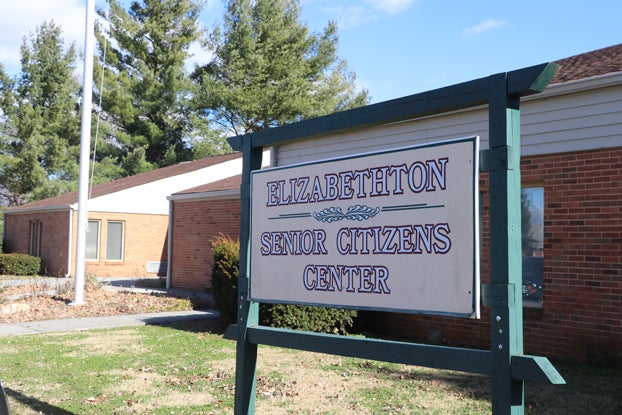The second-deadliest of all Civil War battles was exactly 150 years ago
Published 12:27 pm Monday, May 26, 2014
This week we revisit the Sesquicentennial of the Civil War in reporting on the Battle of Spotsylvania Court House, which took place exactly at this time 150 years ago. It was the followup to the Battle of the Wilderness that had been the opening chapter of Grant’s sustained offensive against the Confederate Army of Northern Virginia, known as the Overland Campaign. Early in May 1864, Grant had led the Army of the Potomac (118,000 strong) across the Rapidan River into the Wilderness, a wild and tangled woodland, some 10 miles west of Fredericksburg, Va. Grant planned to clear the Wilderness before trying to destroy the smaller Confederate Army of Northern Virginia (60,000 troops) under Gen. Robert E. Lee.
But Lee advanced on the Union troops while they were still in that area, causing Grant to face about and order an attack. The nature of the terrain made the Battle of the Wilderness (May 5–6) a disjointed but bloody fight. Grant refused to regroup or retreat. Instead, he continued to maneuver south toward the Confederate capital at Richmond and he then pushed ahead by Lee’s right, heading toward the strategically important hamlet of Spotsylvania Courthouse, about 12 miles to the southeast. Lee, anticipating the move, was soon entrenched at that place.
According to The Encyclopedia Virginia, they next met there, “… where the Union Army of the Potomac and the Confederate Army of Northern Virginia clashed for nearly two weeks, with the heaviest fighting occurring for approximately 21 hours from May 12 to May 13.
“In what some historians have called the most intense combat of the war, the two sides fought largely hand to hand inside Confederate entrenchments. The worst of it occurred at an exposed portion of the line Confederates dubbed the ‘Mule Shoe’ and nearby a curve that came to be known as the ‘Bloody Angle.’ Bodies piled up five deep in a driving rainstorm so that blood mixed with water and some wounded men drowned. ‘No Mardi Gras Carnival ever devised such a diabolical-looking set of devils as we were,’ a Mississippian recalled. ‘It was no imitation of red paint and burnt cork, but genuine human gore and gun powder smoke.’ Casualties were horrific for both sides, but when it was through, Grant continued to push south.
“Numerous engagements were fought along the lines during the fourteen days the armies spent at Spotsylvania. One of the more consequential involved a young West Point–educated Union colonel named Emory Upton, who concluded that attacking well-constructed earthandlog works required a new way of fighting. Rather than attack in long lines of infantry that halted in the open in order to exchange fire with a well-protected enemy behind earthworks, Upton argued for storming columns that never stopped to open fire, but advanced right up to the earthworks, engaging the enemy with the bayonet. He tested his new tactics as part of an allout attack on the evening of May 10. They worked, but when supporting troops failed to arrive, Upton was forced to retreat. Grant was impressed, however, promoting Upton to brigadier general and deciding to duplicate the maneuver on a larger scale, with the support troops directly behind the assault column.
“On the rainy night of May 11, Union troops went into position to attack the apex of the Mule Shoe. In addition to the shifting of troops, the Confederates observed Union wagons and ambulances going toward Fredericksburg. Lee concluded that the Union army was marching away from Spotsylvania and his impressive line of earthworks. He therefore determined to strike Grant’s men when they were on the move. Because the rain could turn dirt roads into mud and slow his planned pursuit of the Union troops, Lee decided to move his artillery out of the salient before the storm turned any worse. After the cannons had been extracted, the Confederates concluded that the Union troops had not continued on to Fredericksburg after all, but had stopped opposite the apex of the Mule Shoe. The Confederate artillery started back to the front lines. At 4:30 a.m. on May 12, 15,000 men of the Union Second Corps under Winfield Scott Hancock advanced Uptonstyle with bayonets fixed across a fog shrouded field on Edward Landrum’s farm, just as the Confederates were returning their cannons to their former positions. About twenty guns were captured — some without firing a shot. A few Confederate infantrymen tried to shoot, but damp powder from the mist prevented many guns from firing. In a short time, Hancock held a half mile of the Confederate trench line and took nearly 3,000 prisoners, including Generals Edward ‘Allegheny’ Johnson (a Virginian) and George H. Steuart, along with the remnants of the famed Stonewall Brigade.
“The fighting at the Bloody Angle is regarded as being the most intense of the war. In places, the dead piled up in the Confederate trenches five deep. ‘No man thought at all,’ a Mississippian remembered. ‘That function seemed to be suspended.’ A Vermont general recalled that ‘many were shot and stabbed through crevices and holes between the logs; men mounted the works, and with muskets rapidly handed them, kept up a continuous fire until they were shot down, when others would take their place and continue their deadly work.’ A confused and impromptu truce was called at one point after rumors led small pockets of Union and Confederate troops to believe that the other had surrendered. In a few cases, men were captured or even killed. One soldier described the incident as ‘very absurd blundering … a number on each side fancying that the men on the other side wished to surrender. [It was] a sort of parley in which almost everybody talked, and hardly anybody listened. Men are unlike women, who can talk and listen at the same time.’ As night fell, some Confederates were even injured when an oak tree, twenty-one inches in diameter, was cut down by musket fire.”
The Encyclopedia Virginia concludes by saying “Grant eventually broke off contact with the Confederates at Spotsylvania, sending a segment of his army east with the hope that Lee would chase after it. He continued to maneuver south, however, and next confronted Lee May 27–28 along the banks of the North Anna River. Spotsylvania, like the Wilderness, had been a tactical draw that Grant — even at the cost of 18,000 killed, wounded, and captured — turned into a strategic victory by refusing to retreat. Lee’s losses probably numbered more than 12,000 as he tried and failed to blunt Grant’s advance.”
As the following numbers show, Spotsylvania Courthouse was the second deadliest of the entire Civil War:
• Battle of Gettysburg, June 3-July 24, 1863: 7,863 dead (3,155 Union and 4,708 Confederate)
• Battle of Spotsylvania Court House, May 8–21, 1864; 4,192 dead (2,725 Union and 1,467 Confederate)
• Battle of Chickamauga Sept. 1–20, 1863; 3,969 killed (1,657 Union, 2,312 Confederate)
• Battle of the Wilderness, May 5–7, 1864; 3,723 killed (2,246 Union troops; 1,477 Confederate)
And all of this happened 150 years ago this month. This account in The Encyclopedia Virginia was contributed by Gregory A. Mertz.



